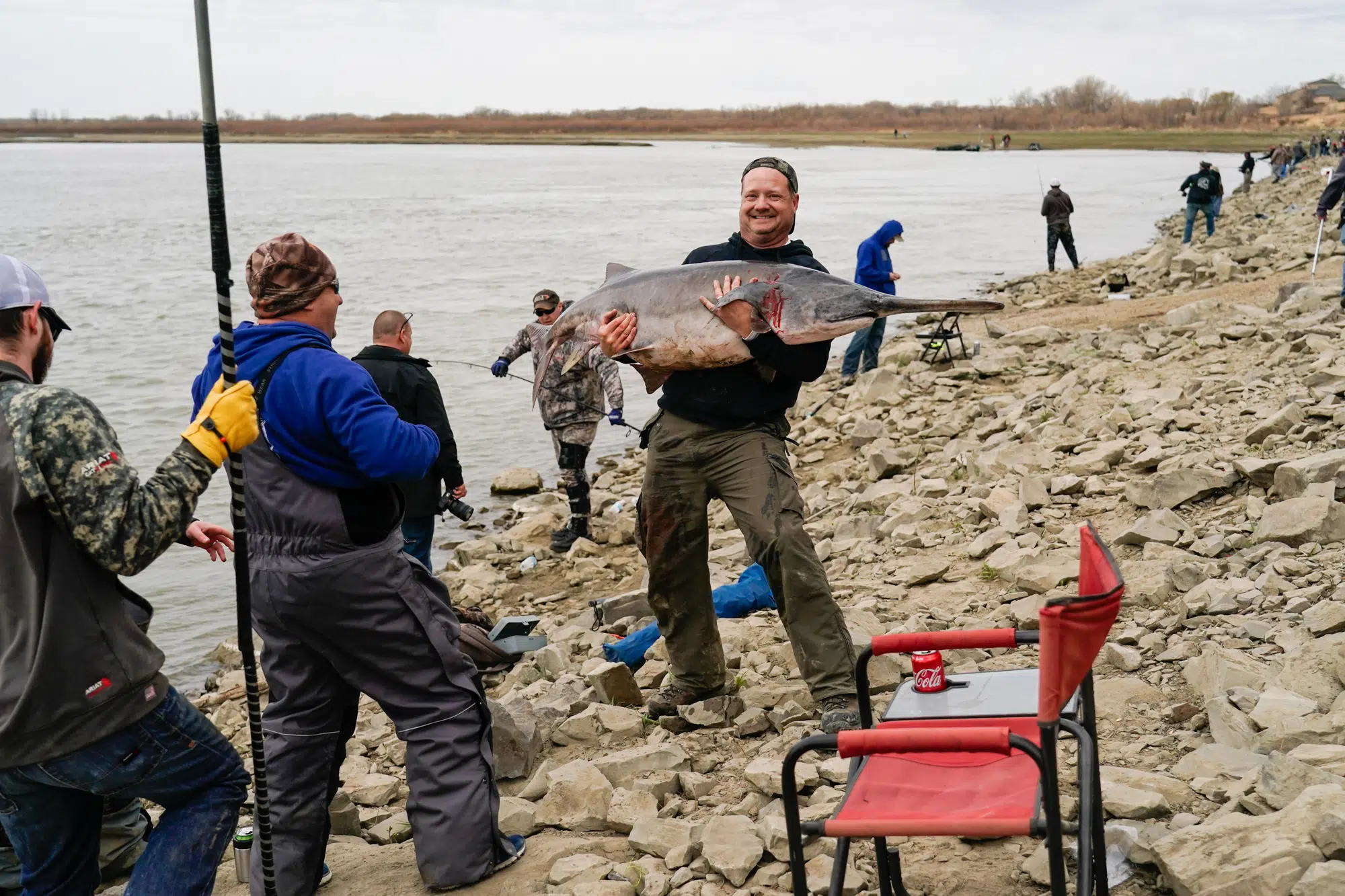
By Doug Leier
One of the most unique seasons in North Dakota’s outdoors is the paddlefish season. For some the season is an annual reunion of family and friends, sort of the spring version of deer camp. And if you can’t make it, your excuse better be good.
For those who don’t know, here’s a look at one of North Dakota’s most unique species on land or water.
What are paddlefish?
Paddlefish represent an ancient lineage of fish most closely related to sturgeons. There are only two species of paddlefish in the world; an extremely endangered (possibly extinct) species found in China, and our North American species, currently found in 22 states throughout the Missouri and Mississippi river basins.
What do they eat?
Paddlefish feed mostly on tiny animals called zooplankton. Very young paddlefish, with help from their small teeth, selectively feed on individual zooplankton. After their first year, paddlefish use filament-like gill rakers to filter zooplankton from the water. Paddlefish also eat aquatic insects and, occasionally, small fish. Because paddlefish won’t bite large bait, anglers hoping to harvest a paddlefish must participate in snagging.
What is the purpose of a rostrum?
The rostrum supports an electrosensory system that detects weak electrical fields. The rostrum, as well as the head and gill flaps, is covered with tiny sensory pores that detect the weak electrical field generated by small food organisms. Very young fish do not even have a rostrum. But by the time a fish reaches 8 inches, the rostrum may be nearly half its total length. As fish get older and larger, the rostrum becomes comparatively shorter in terms of its proportion to the total length of the fish.
Where are they found?
Within North Dakota, paddlefish are found in the Yellowstone River and throughout the Missouri River mainstem. The population that resides within Lake Sakakawea and upstream in the Missouri and Yellowstone rivers (known as the Yellowstone-Sakakawea stock) is the only stock in North Dakota that supports a snag fishery. There is another smaller stock in North Dakota that inhabits Lake Oahe and the Missouri River below Garrison Dam.
How big do they get?
The largest paddlefish on record was speared in Lake Okoboji, Iowa in 1916. It was 85 inches and weighed an estimated 198 pounds. More recent official state records are a 144-pound fish snagged in 2004 in Kansas and a 142.5-pound fish snagged in 1973 in Montana. The current North Dakota record is a 131- pound fish snagged in 2016. Fish living in lakes and reservoirs often grow faster and larger than those living solely in rivers, because reservoirs usually contain more zooplankton.
Paddlefish Management
The greatest threat is the loss of habitat for successful spawning and recruitment. Paddlefish need natural, free-flowing rivers to reproduce effectively. Without spawning habitat there’s really little that can be done to maintain viable populations long-term. Water withdrawals from the Missouri and Yellowstone rivers are reducing available habitat. Protecting and enhancing habitat and flows in these rivers are critically important for the long-term survival of the stock.
Snag fisheries are regulated to ensure that the Yellowstone-Sakakawea stock is not overharvested. Illegal fishing is a major threat, however, and has been documented in several other states. Any illegal harvest activities should be reported.




Comments